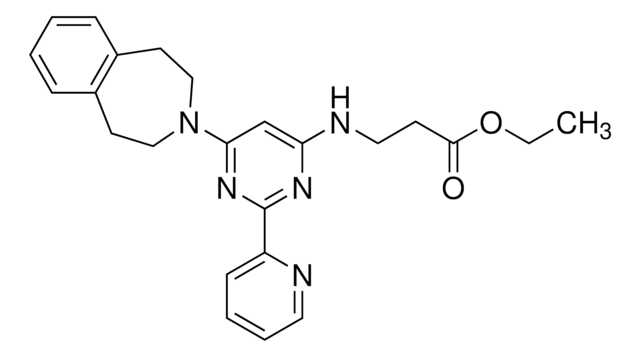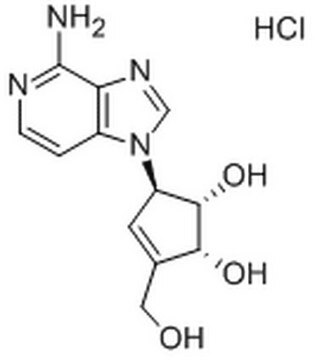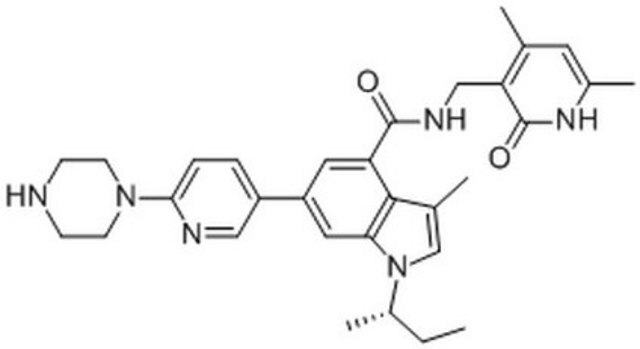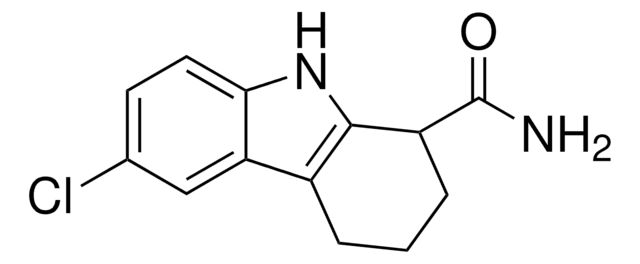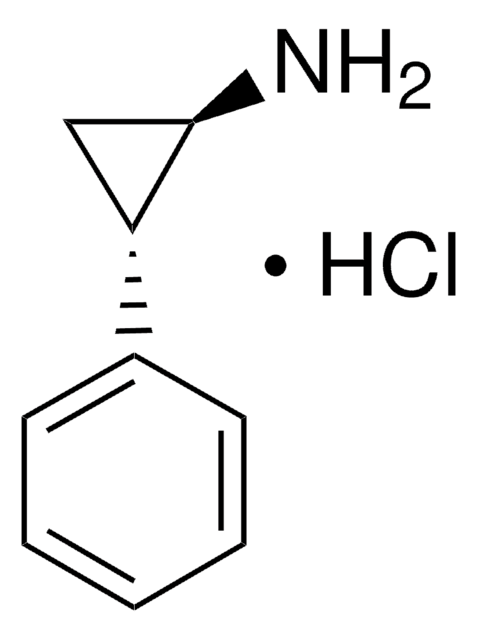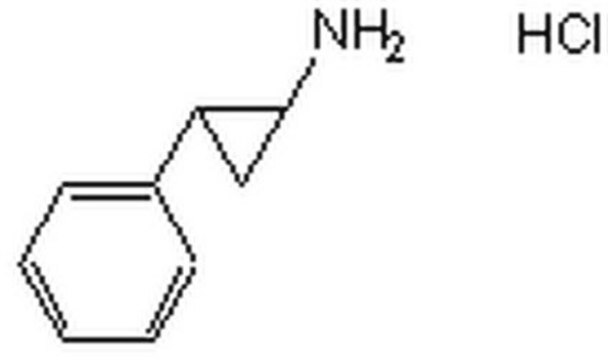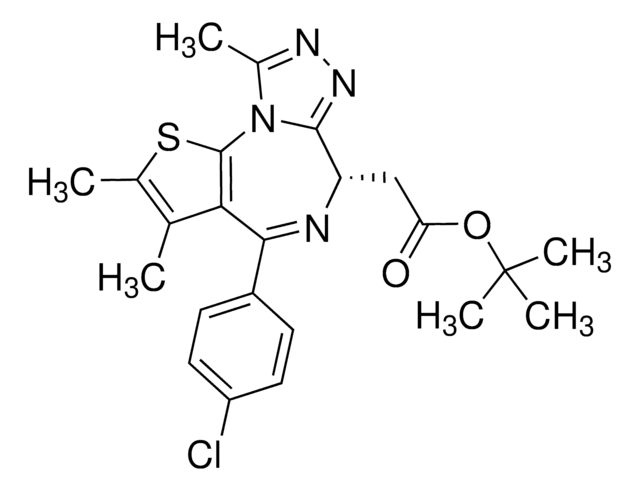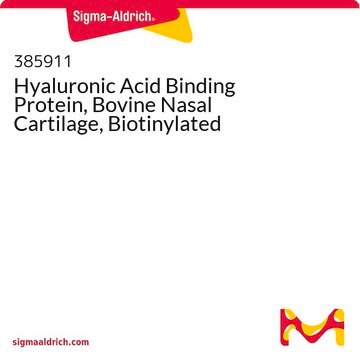SML0709
GSK-J1
≥98% (HPLC)
Synonym(e):
3-((6-(4,5-Dihydro-1H-benzo[d]azepin-3(2H)-yl)-2-(pyridin-2-yl)pyrimidin-4-yl)amino)propanoic acid; N-[2-(2-pyridinyl)-6-(1,2,4,5-tetrahydro-3H-3-benzazepin-3-yl)-4-pyrimidinyl]-β-Alanine
About This Item
Empfohlene Produkte
Qualitätsniveau
Assay
≥98% (HPLC)
Form
powder
Farbe
white to beige
Löslichkeit
DMSO: 15 mg/mL, clear
Lagertemp.
2-8°C
SMILES String
OC(CCNC1=CC(N2CCC(C=CC=C3)=C3CC2)=NC(C4=CC=CC=N4)=N1)=O
InChI
1S/C22H23N5O2/c28-21(29)8-12-24-19-15-20(26-22(25-19)18-7-3-4-11-23-18)27-13-9-16-5-1-2-6-17(16)10-14-27/h1-7,11,15H,8-10,12-14H2,(H,28,29)(H,24,25,26)
InChIKey
AVZCPICCWKMZDT-UHFFFAOYSA-N
Verwandte Kategorien
Anwendung
Biochem./physiol. Wirkung
To learn about other SGC chemical probes for epigenetic targets, visit sigma.com/sgc
Leistungsmerkmale und Vorteile
Ähnliches Produkt
WGK
WGK 3
Flammpunkt (°F)
Not applicable
Flammpunkt (°C)
Not applicable
Analysenzertifikate (COA)
Suchen Sie nach Analysenzertifikate (COA), indem Sie die Lot-/Chargennummer des Produkts eingeben. Lot- und Chargennummern sind auf dem Produktetikett hinter den Wörtern ‘Lot’ oder ‘Batch’ (Lot oder Charge) zu finden.
Besitzen Sie dieses Produkt bereits?
In der Dokumentenbibliothek finden Sie die Dokumentation zu den Produkten, die Sie kürzlich erworben haben.
Verwandter Inhalt
We offer a variety of small molecule research tools, such as transcription factor modulators, inhibitors of chromatin modifying enzymes, and agonists/antagonists for target identification and validation in gene regulation research; a selection of these research tools is shown below.
Unser Team von Wissenschaftlern verfügt über Erfahrung in allen Forschungsbereichen einschließlich Life Science, Materialwissenschaften, chemischer Synthese, Chromatographie, Analytik und vielen mehr..
Setzen Sie sich mit dem technischen Dienst in Verbindung.